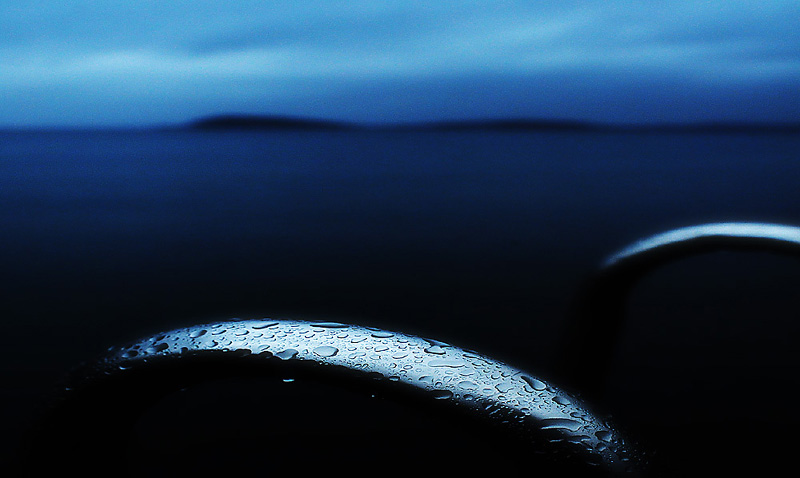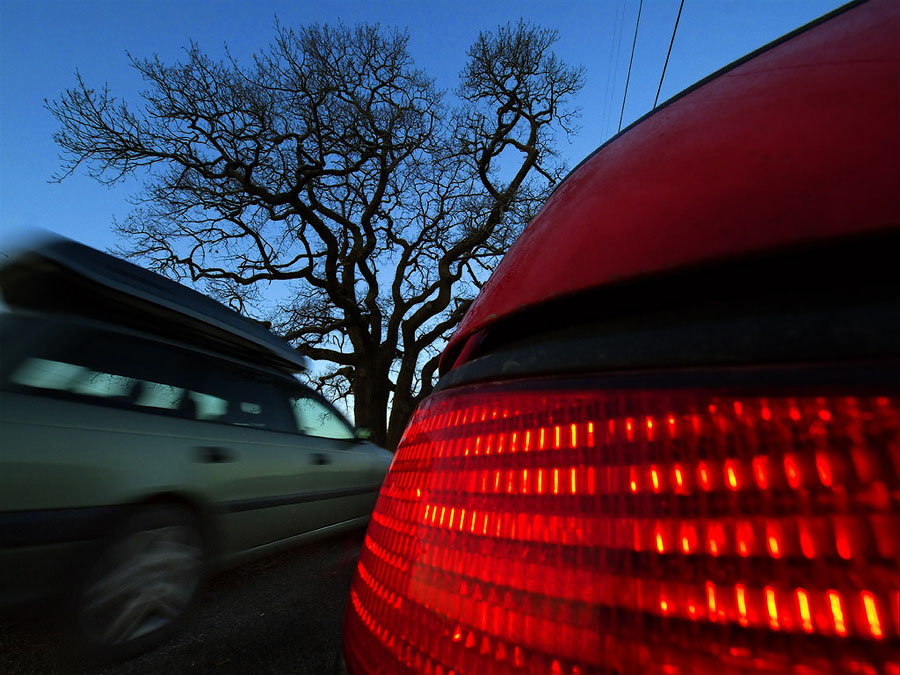| Nikon D3 Digital Camera Reviewed |
|
|
| by Bjørn
Rørslett First published 24 December, 2007
|
|
1.
Introduction
Every one
waited for Nikon to move up to the next level of digital sensor
size, the "full-sized" FX or 35mm-like solution. Years
went by and seemingly nothing happened. We admired Nikon's clever
ergonomic solutions and at least some of us ogled the high-ISO
performance of the competition with a little envy. Then, Nikon
struck back with a camera advertised to "defy the
limitations" no less.
The D3 is
not only a 35mm-frame camera, it is so much more and with
high-ISO performance unheard and undreamt of as well. With a
blazing firing rate up to 9 fps(FX)/11 fps(DX), this is a sports
and action shooter's dream camera come true. But what can it
achieve for other fields of photography? In this review, I shall
try to elaborate these aspects of this new Nikon DSLR. Consider
this more akin to a personal travelogue written as I made myself
familiar with the D3 rather than a compilation of features.

|
Blue Rain at Dusk
© Bjørn
Rørslett/NN
Who would
even consider shooting at insanely high ISO settings
before the arrival of the D3? Now, you can, with Nikon.
Its more about avaialble darkness than available light
these days. Light was fading fast when I found this
subject, so an ISO setting of 4000 was needed to allow me
to do this shot hand-held with my 35/1.4 at 1/30 sec. I
could even afford the luxury of stopping down a little to
get the foreground rendered with sufficient depth.
|
The D3 is the first FX format
digital camera from Nikon, and as such being eagerly awaited by
diehard Nikon users. Instead of the misnomer "full
frame" (what camera hasn't got that?), Nikon introduced the
FX format, specified to be 23.9 x 36 mm, within a hair's width of
the 24 x 36 mm format we associate to 35 mm film-based cameras of
days just gone. They even went one better by allowing the camera
not only to shoot FX format, but also the existing DX or a new
5:4 aspect ratio format. The DX format can be engaged
automatically when a DX lens is mounted if the camera has this
option set, or the desired image area (FX, 5:4, DX) can be
selected later under actual shooting.
Nikon has researched
"full frame" imagers since the days of the venerable D1
camera that introduced the DX (15.6 x 23.7 mm) format, but the
company's engineers did not feel they could achieve the quality
they wanted just by scaling up a DX chip. In true adherence to
the Nikon heritage they used the time deemed necessary to come up
with the solutions they felt had the imaging quality needed.
Mouths were tight-lipped meanwhile and the pressure from the
world-wide community of impatient Nikon users must have been
immense. No wonder the Nikon CEO and top-ranking officials were
visibly proud when they, finally, could show their long awaited
product.
I will not spend too much
time on describing all the features on the D3, because
plenty of this information is floating around on the better web
sites already. Or, you may get a brochure from a dealer or
download a PDF file from one of the official Nikon sites.
Relevant points and issues are covered during this review
article. For a user of the D1/D1X/D1H/D2H/D2X models, the
interface of the D3 will be very intuitive, and I think most
people will take an instant liking to the sheer feel and handling
ease of this camera.
Compared to the
predecessor, the D2X, the manual of the D3 has ballooned to
nearly the double size and at 476 pages clearly shows that the
new camera has an intimidating complexity. Thus, reviewing such a
camera is a formidable task and for an unpaid reviewer like
myself, a major undertaking. I would also base a review upon
actually using the camera for a wide range of shooting
applications, in order to eastablish what it can or cannot
achieve in terms of picture quality and practical usefulness. It
should be understood that I always review gear in the context I
myself intend to use it. Thus, if you find a feature of high
interest to you not dealt with in detail, this isn't because I
glossed over that aspect but simply means it isn't of equal
interest to me. My only prerogative as an unpaid reviewer as it
were.
For each new series of a digital camera, I
as an end user sincerely hope they finally have come of age. I
simply wish to go on shooting like I always have done, not
needing to pay much attention to the actual media within the
camera itself, be it film or digital. So far into the digital
epoch, my hopes have been unfulfilled as a whole although the
digital image quality all along has endeared the technology to
me. With D3, the ghost of the film era might eventually be laid
to rest - or is this hope not yet fulfilled? Read on to find out
my observations. Please note that the illustrations of this
review article are quite large and thus demand a certain
bandwidth.

|
The King's Oak
© Bjørn
Rørslett/NN
We are back
to a shooting experience in which a short lens is ultra
wide, in this case it is the 14-24 mm f/2.8 AFS Nikkor
having 114 degrees picture angle. Useful for something,
I'd guess, in particular when you can shoot at 1600 ISO
and f/22 for a change.
This nice
Summer oak tree is set in a rural landscape outside my
home town, Oslo, and has a documented long history
extending hundreds of years back in time. It is protected
under the Nature conservancy Act but that obviously does
not prevent Modern Times from encroaching on it.
|
I got the first production sample of the D3
to arrive in Norway in November, 2007, and set immediately out on
a long journey to acquaint myself with this complex camera. Many
new angles of approach have been followed and more emerged along
with the progress of the testing. The hectic research and testing
of the last couple of months have eclipsed my ordinary
picture-taking activity, so please bear this in mind when you
read the article as a whole. I'll come up with better images
later on, when the conditions settle back to normal. Moreover,
I'd like to have any factual or writing error(s) pointed out to
me, because you do tend to miss them in the last publishing stage
(if you disagree with
my findings, this is of course entirely OK, but disagreement
doesn't constitute an error as such).
This review will find itself in a draft
stage for a while as I'm undoubtedly will be redoing parts of it
or adding more information to sections I feel need so. This is
normal for a review of this kind and merely reflects that there
is a limit to the amount of contiguous time I can spend writing
up such stuff.
I also avail myself of the
opportunity to elaborate and clarify a few points of potential
interest. It is true that I was invited by Nikon Europe BV to
attend the official Nikon D3 Launch in Tokyo in August, 2007. It
is also a fact that Nikon has asked to sponsor my reviewing
activity, an offer which I have politely declined. Thus, I have
to purchase Nikon gear like everybody else, but sometimes I can
negotiate a fair price. If all of this makes me a Nikon
mouthpiece, feel free to think so and just ignore my numerous
published critical comments to Nikon products on my web pages and
elsewhere. I trust people are able to make up their own minds.

